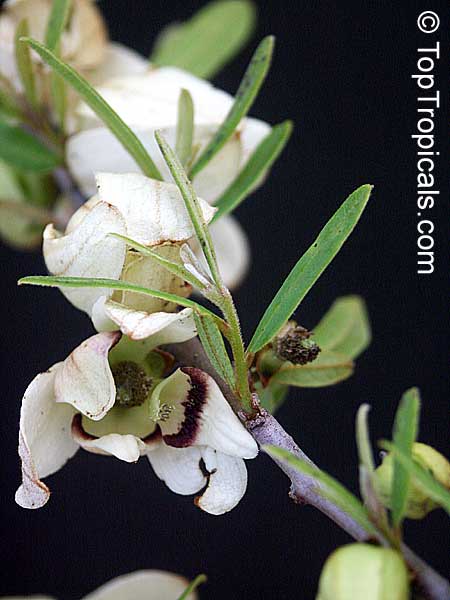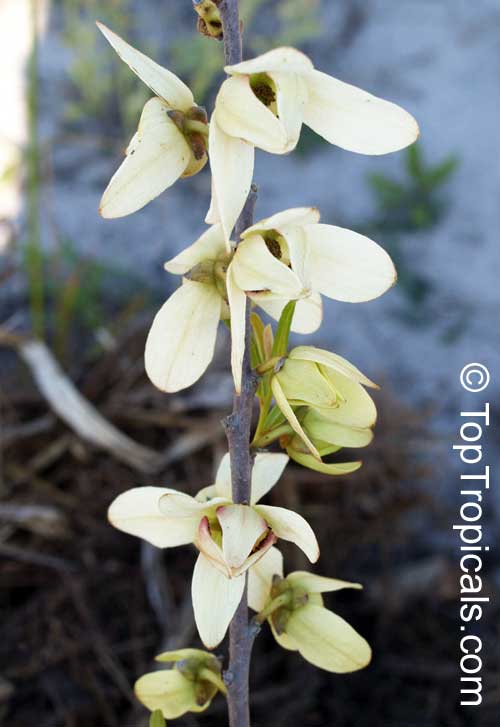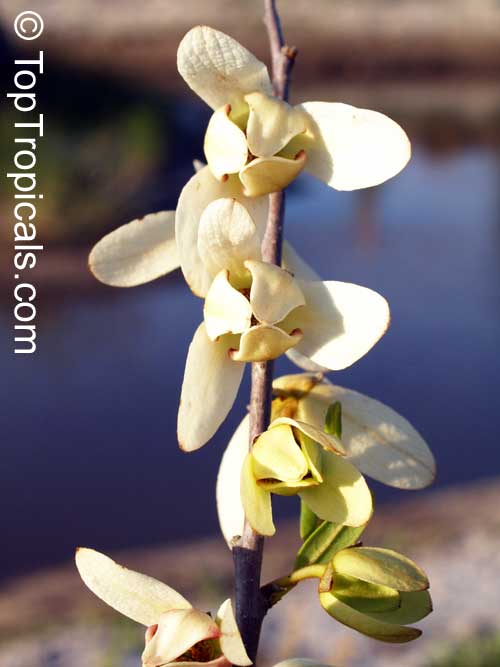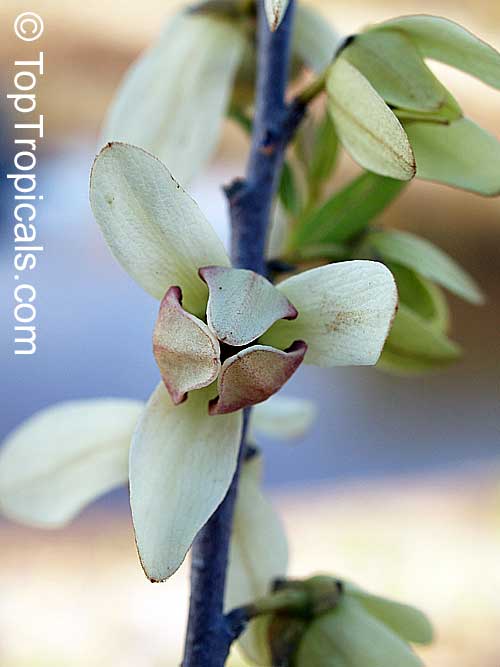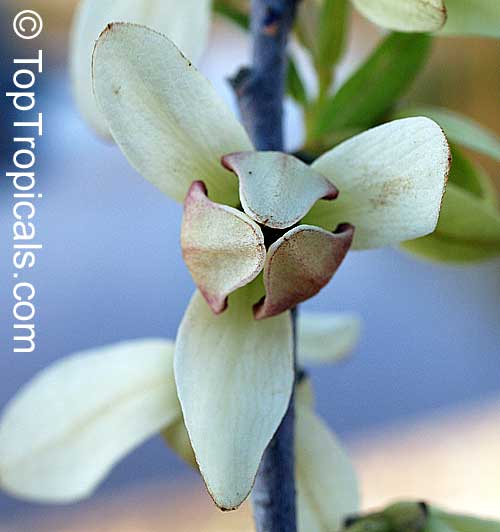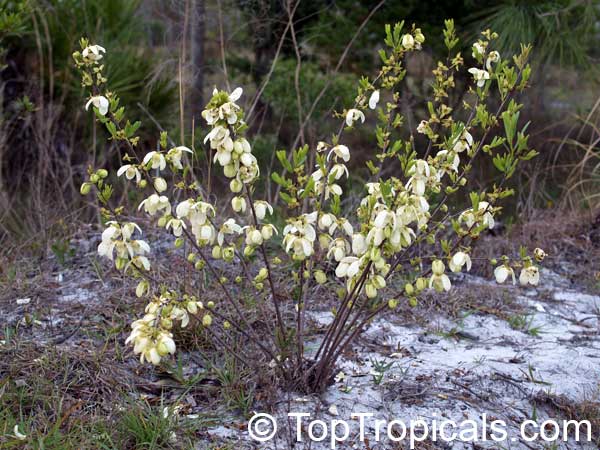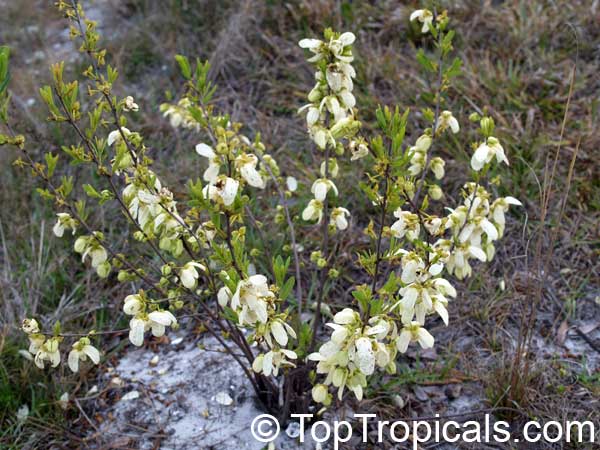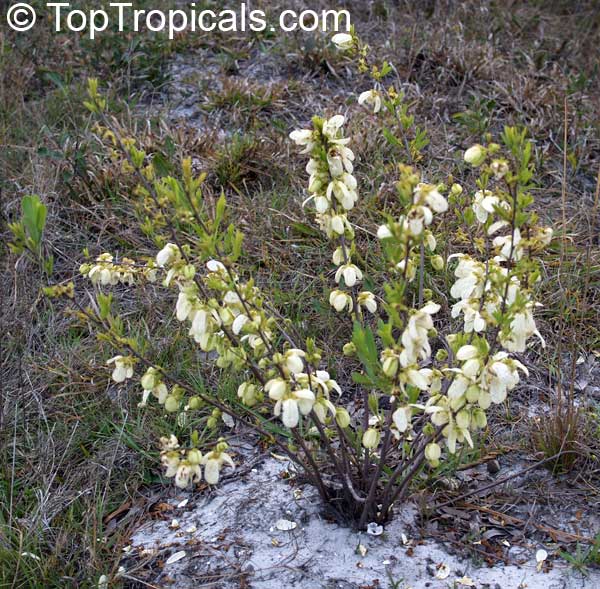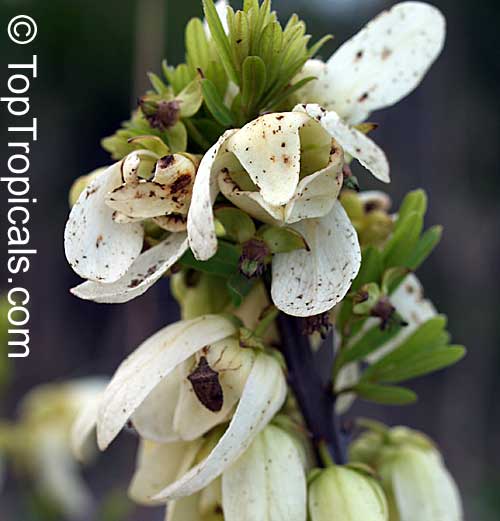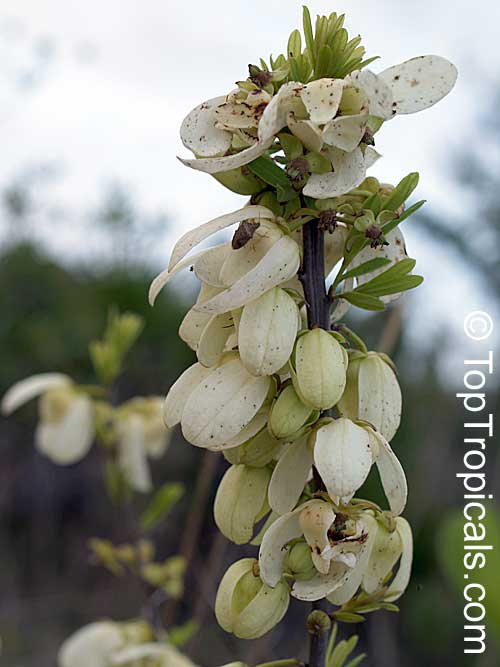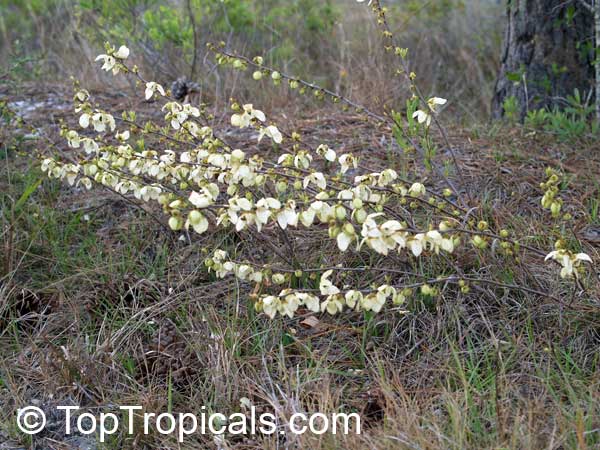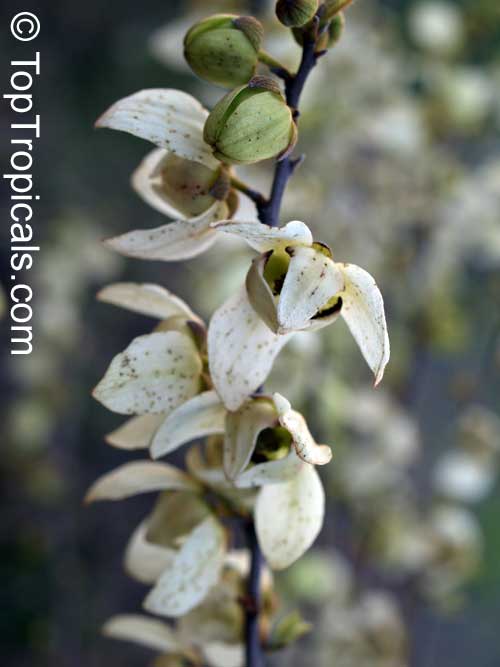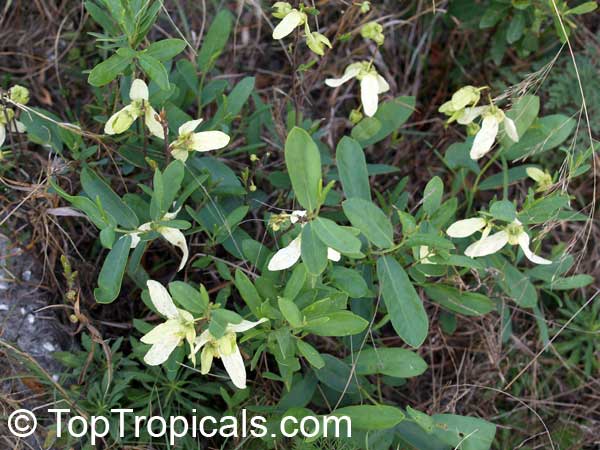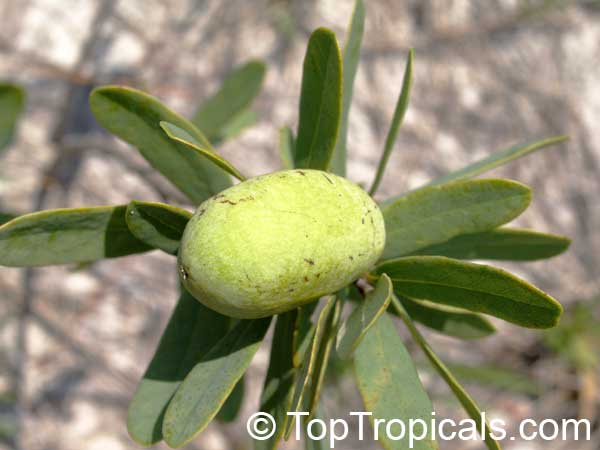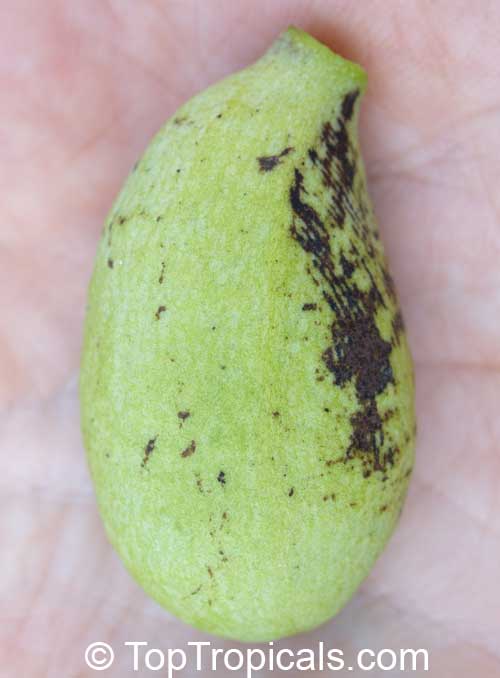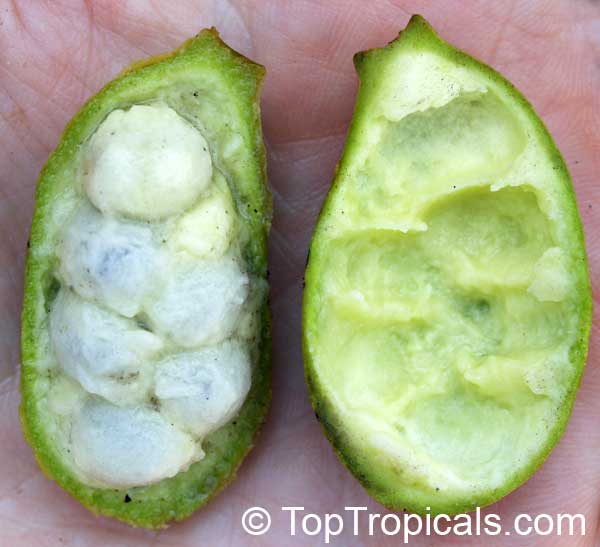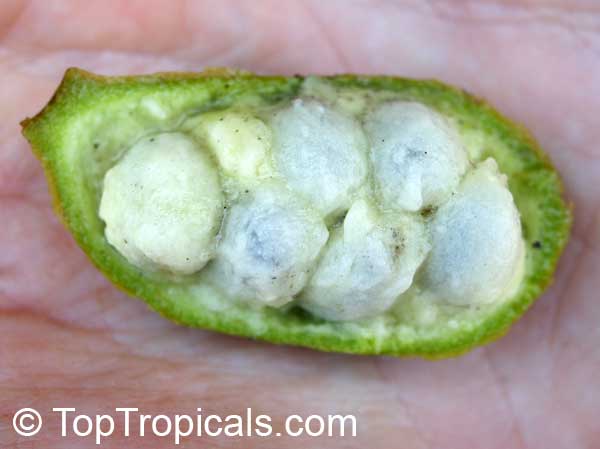Asimina reticulata (Netted Pawpaw)
Top Tropicals Plant Encyclopedia
Botanical name: Asimina reticulata
Common name: Netted Pawpaw
Family: Annonaceae
Origin: Florida to Georgia






Asimina reticulata, also known as the Netted pawpaw, is a shrub that is easy to care for. It thrives in full sun, moderate watering, and well-draining soil. Although drought-tolerant, it can also withstand flooding. Pruning is not necessary, but trimming can help maintain its shape and size. Deadheading spent blooms encourages more flowers to grow.
The Netted pawpaw can be found in dry areas that become swampy for a few months during the rainy summer season. It blooms in the spring. Unlike other members of the Annonaceae family, pawpaws are found outside of the tropics.
The Netted pawpaw's flowers are unique and beautiful. They are nodding structures and the netted pawpaw has one of the prettier blooms. The flower is trimerous and the stamens are tightly packed, forming a solid hemisphere of anthers surrounding the receptacle. The center of the anthers features three or more stigmas. The flowers are ready for pollination before the anthers shed their pollen. This ensures cross-pollination, and the pollen must come from an older flower, preferably on a different plant.
Overall, the Netted pawpaw is a beautiful and adaptable shrub that can be a great addition to any garden. While the ideal climate for growing this species is USDA Zone 8-10, it can thrive in other areas with proper care.
For pot cultivation in colder regions with cool winter months, a well-draining soil mix is recommended. The pot should be placed in a sheltered area and protected from rain and wind in winter. It should also be placed against an east-facing wall or fence to shield it from direct sun. An extra layer of mulch can help insulate the roots during winter. During summer, the plant should be exposed to plenty of sunlight and watered regularly to keep the soil moist but not soggy. In winter, water as needed, and feed with a balanced fertilizer in spring and summer.






